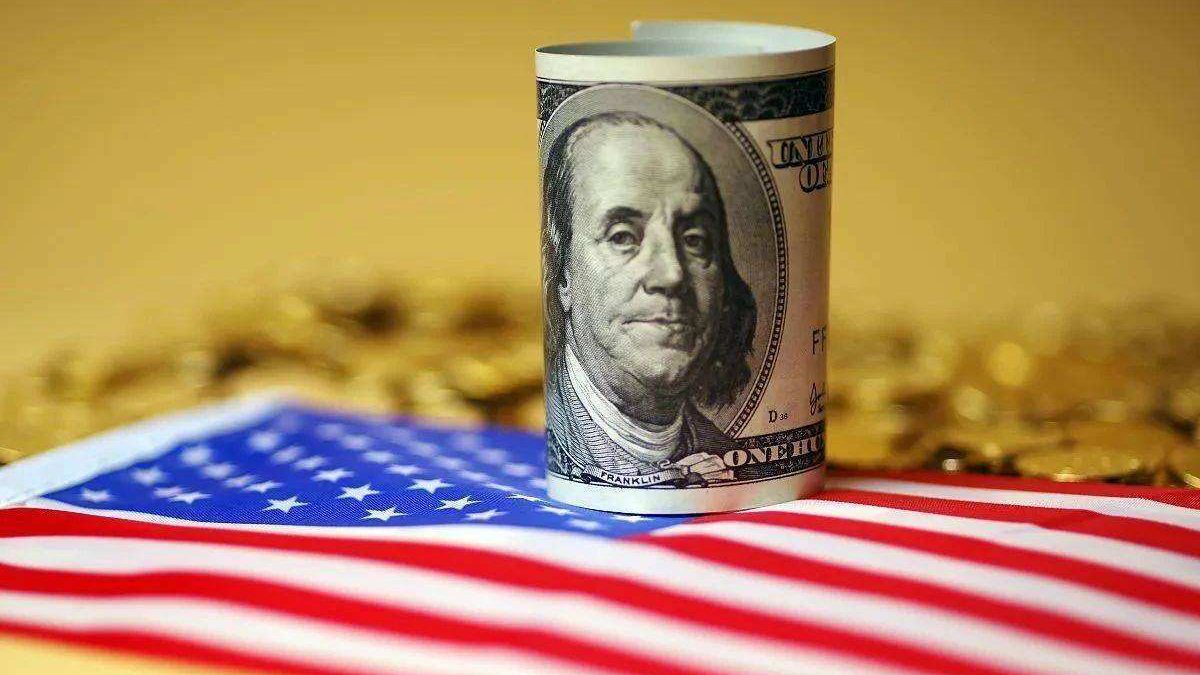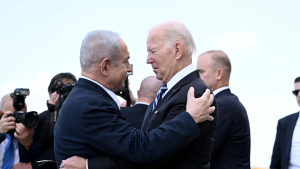How Does the U.S. Dollar Hegemony “Drain Blood” from the World Economy?

The U.S. dollar is the most important currency in the world today. About 40% of international trade is settled in US dollars, and US dollar assets account for about 60% of the world’s reserve currencies. The yield curve of financial products denominated in US dollars, especially US Treasury bonds, is considered the valuation basis for global assets. The international monetary rules, transaction networks, and organizational structures with the U.S. dollar as the core constitute the U.S. dollar system. This system is one of the important pillars of American hegemony. However, the development of this system lacks legitimacy. The arbitrary U.S. government has made the system full of flaws, and it has increasingly become a weapon used by core interest groups within the hegemonic country to harvest global wealth.
The U.S. Dollar System Lacks Legitimacy
Looking back at the history of the international monetary system, it is not difficult to see that the current US dollar system is a product of a series of “defaults” and political manipulation. In the 1944 Bretton Woods Conference, 44 countries collectively agreed to implement an international monetary system with a gold-dollar standard as its core. Two major institutions, the International Monetary Fund (IMF) and the World Bank, were established. Although the U.S. dollar replaced the British pound as the key currency, the issuance of its underlying currency was subject to the hard constraint of the gold exchange ratio. The gold-dollar system had a certain degree of international legitimacy only with the agreement of the contracting countries.
After 1971, due to the inability of the U.S. to redeem the circulating US dollars overseas with its gold reserves, the Nixon administration unilaterally canceled the direct international convertibility of the United States dollar to gold, a policy that lasted for over half a century. The U.S. government unilaterally reneged on the redemption commitments stipulated in international treaties, and the U.S. dollar-centered international monetary system lost its international legal basis.
After the breakdown of the gold exchange mechanism for the U.S. dollar, the IMF convened discussions among countries to adopt Special Drawing Rights (SDR) as international reserve currencies in order to avoid global financial turmoil. This reform initiative, based on multilateralism, attempted to establish a fairer and more rational international reserve currency system to help member countries better cope with financial crises. According to the rules of the IMF, such significant agendas require support from at least 85% of the voting power, and the U.S. has never had less than 15% of the voting power, which gives it the privilege of “hijacking” international monetary affairs. While the U.S. advocates the so-called “one person, one vote” decision-making rule in other contexts, it firmly upholds the “one dollar, one vote” game rule in the governance of institutions such as the IMF. The U.S., using its de facto “exclusive veto power,” has long obstructed the development and implementation of the SDR-based system to protect the hegemonic status of the U.S. dollar as a global reserve currency. Under US intervention and manipulation, today, the composition of the SDR still lacks universality and fairness. The growth and international use of SDR remains extremely limited, making it difficult to play the role of an international reserve currency.
Therefore, the hegemonic status of the U.S. dollar system and the power of the U.S. dollar to issue without hard redemption constraints are the results of a series of major defaults and arrogant overreach by the U.S. government, which lacks legitimacy and justification.
The Main Sources of Global Economic Risk
To understand the turmoil and risks that the U.S. dollar system brings to the world, let’s imagine the following scenario: An office crowded with over two hundred colleagues of different heights, sizes, and shapes, but with only one air conditioner. One tall muscular guy holds the remote control for the air conditioner tightly in his hand and adjusts the temperature based solely on his own sense of hot or cold, causing harm to other colleagues. When many people already feel overheated, he continues to raise the temperature, causing everyone to roast. After a while, he abruptly switches the air conditioner to cold mode, causing the colleagues with weaker constitutions to shiver and catch a cold.
The U.S. dollar, which seized the throne of the international reserve currency from gold and SDR, is now that air conditioner. The monetary policy of the Federal Reserve is the remote control that has been hijacked. The U.S. government’s monetary policy has always only considered its domestic economic control needs, without taking into account the feelings of other countries within the U.S. dollar system. Since the 1970s, nearly 200 financial crises have erupted globally, most of which occurred during the Fed hike cycles. The systemic root cause of these crises lies in the significant fluctuations in the U.S.’s monetary policy. During the rate-cutting cycles, the financial industry seeks profits by pouring US dollars into the global market, leading to asset bubbles and overheated economies in recipient countries. However, during the rate hike cycles, US dollars are abstracted from the global market to its domestic market swiftly, causing the affected countries to fall into financial or debt crises. The tidal cycles of the U.S. dollar generate enormous negative externalities and become the source of risk in the world’s economic and financial system. Since spring 2022, in order to curb the persistently high inflation levels domestically, the target Federal Funds Rate in the United States has rapidly risen from 0.25% to 5.5%. It causes significant currency depreciation in many countries. Sri Lanka and other countries have even experienced severe financial crises, resulting in political unrest and deteriorating living conditions.
The Weapon of Plundering and Oppressing Countries Worldwide
The U.S. dollar system is a tool for the United States to seize global wealth and power, and the notorious “twin deficits” policy is one example. The “twin deficits” refer to the simultaneous growth of fiscal deficits and trade deficits. During the era when the U.S. dollar promised to exchange at a fixed price for gold, the proportion of US government debt to GDP steadily declined. The U.S. government understood that its debt was essentially denominated in gold and would eventually have to be repaid in gold, including principal and interest. However, since the United States abandoned the international obligation to redeem the U.S. dollar for gold in 1971, the federal government’s debt ratio has continued to soar. The so-called debt ceiling is only a fig leaf and a means for politicians to attack each other.
Over the past 52 years, the wave-like expansion of fiscal deficits has caused the scale of the U.S. national debt to expand from $40 billion at the end of the gold standard era to over $32 trillion today, an increase of nearly 800 times. Moreover, about one-fourth of this debt has been purchased out of thin air by the Federal Reserve through quantitative easing. During the same period, the Fed’s balance sheet expanded from $90 billion to $900 billion in 2008. After multiple rounds of quantitative easing to cope with the financial crises and the impact of the COVID-19 pandemic, it reached a high of $9 trillion in 2022. The continuous issuance of US dollars has led to the depreciation of the purchasing power of global currencies over the past 50 years, resulting in long-term nominal price increases for global assets, services, and scarce commodities.
Chinese people often use the term “Yin Chi Mao Liang (living beyond one’s means)” to describe those who borrow and consume excessively, but it is inaccurate to describe the U.S. “twin deficits” policy. “Living beyond one’s means” implies that the debtor intends to repay the debt incurred from excessive spending. However, after the U.S. federal government overspends, it has no intention of repaying the debt, only continuously rolling over the debt and creating new debt endlessly. The expansion of the Federal Reserve’s balance sheet to support the continuous fiscal deficits is essentially a sort of seigniorage imposed by its central bank on global US dollar savers on behalf of the Treasury Department. This is a theft of wealth from workers and savers worldwide.
There are multiple methods to calculate the international seigniorage of the U.S. dollar. A relatively simple way is the annual current project deficit of the United States since they exchange pieces of paper and symbols for the blood, sweat, and resources of other countries year after year. The U.S. trade deficit accounts for less than 5% of the size of the U.S. economy. Some argue that the U.S. reliance on international seigniorage is not significant, but this is misleading due to the way GDP is calculated. When calculating the GDP in the U.S., a significant proportion of output from non-trade sectors is included. Therefore, to estimate the U.S. economy’s reliance on international seigniorage, it would be more appropriate to use the ratio of the U.S. current account deficit to its tradable goods output. This ratio typically falls between 15% and 20%. Alternatively, one can examine the proportion of the U.S. current account deficit to its total imports, which has had an average value of around 20% over the past 40 years. In other words, once the U.S. loses the ability to ‘drain Blood‘ from the world through the seigniorage, the average welfare level of the American people will decrease by about one-fifth compared to the present.
The U.S. dollar system is not only used to plunder wealth but also as a diplomatic tool for the U.S. government. It is frequently used to impose financial sanctions on other countries. The U.S. uses the messaging and settlement systems of the U.S. dollar to force banks around the world to cooperate in imposing sanctions on countries such as Iran, North Korea, and Russia. It is like a rogue property management company that uses public resources to pry into the privacy of homeowners and threatens and extorts them by cutting off water and electricity. Such a bully often claims to be a provider of public goods but is actually using public resources for private gain, with its wealth and power amplified by the U.S. dollar hegemony.
The Backlash of the U.S. Dollar System
Everything has its pros and cons, and the hegemony of the U.S. dollar also comes with a cost. The United States used to be the most advanced manufacturing country in the world. However, since it developed an addiction to leveraging twin deficits for currency privileges, the significantly overvalued US dollar exchange rate has severely weakened its manufacturing competitiveness. The share of US manufacturing value-added in the world has declined from 40% in the 1970s to 17.4% today. The proportion of manufacturing employment has dropped from 22% to 8%. Blue-collar workers, typified by the “Rust Belt” in the U.S., have become the victims of twin deficits and the outflow of industrial capital. Yet, US politicians irresponsibly blame other countries, accusing East Asian nations of manipulating exchange rates and “stealing” manufacturing jobs from the U.S.. Looking at the international balance of payments, the hegemony of the U.S. dollar and the deindustrialization of the U.S. are like two sides of a coin. However, US political elites, while benefiting from the abuse of US dollar hegemony, shifted blame onto other countries, sparking a wave of anti-globalization sentiments among their domestic population.
Another major consequence of the U.S. dollar system within the United States is exacerbating wealth inequality. Prolonged and excessive money printing has driven up asset prices. Particularly stock prices enrich the wealthiest class at a much faster pace than the growth of the national GDP. In 1970, the wealthiest 0.1% of the U.S. population held approximately 9% of the total wealth in society, but now it has reached 20%. Even though financial crises and the COVID-19 pandemic briefly caused asset prices to plummet, the wealthy class was still enabled to optimize assets through liquidity through quantitative easing. Meanwhile, the middle and lower classes have suffered significant losses, facing widespread threats of unemployment. It can be seen that the dollar system mainly serves the minority rentier class in the United States. Its toxicity not only harms the world but also leads to the prevalence of populism, which ultimately tears apart American society.
As a result, an increasing number of people worldwide are calling for liberation from the enslavement and exploitation of the U.S. dollar hegemony. Even within the United States, enlightened individuals have realized that the hegemony of the U.S. dollar not only harms the world but will also lead the country toward decline and turmoil. If we want to stabilize the world amidst the growing dangers of anti-globalization and populism, it is imperative for the world to return to a fair international monetary system.
(For the full article please check: https://mp.weixin.qq.com/s/xQ8gIvJqBVWTlf1iVgK1ww )



